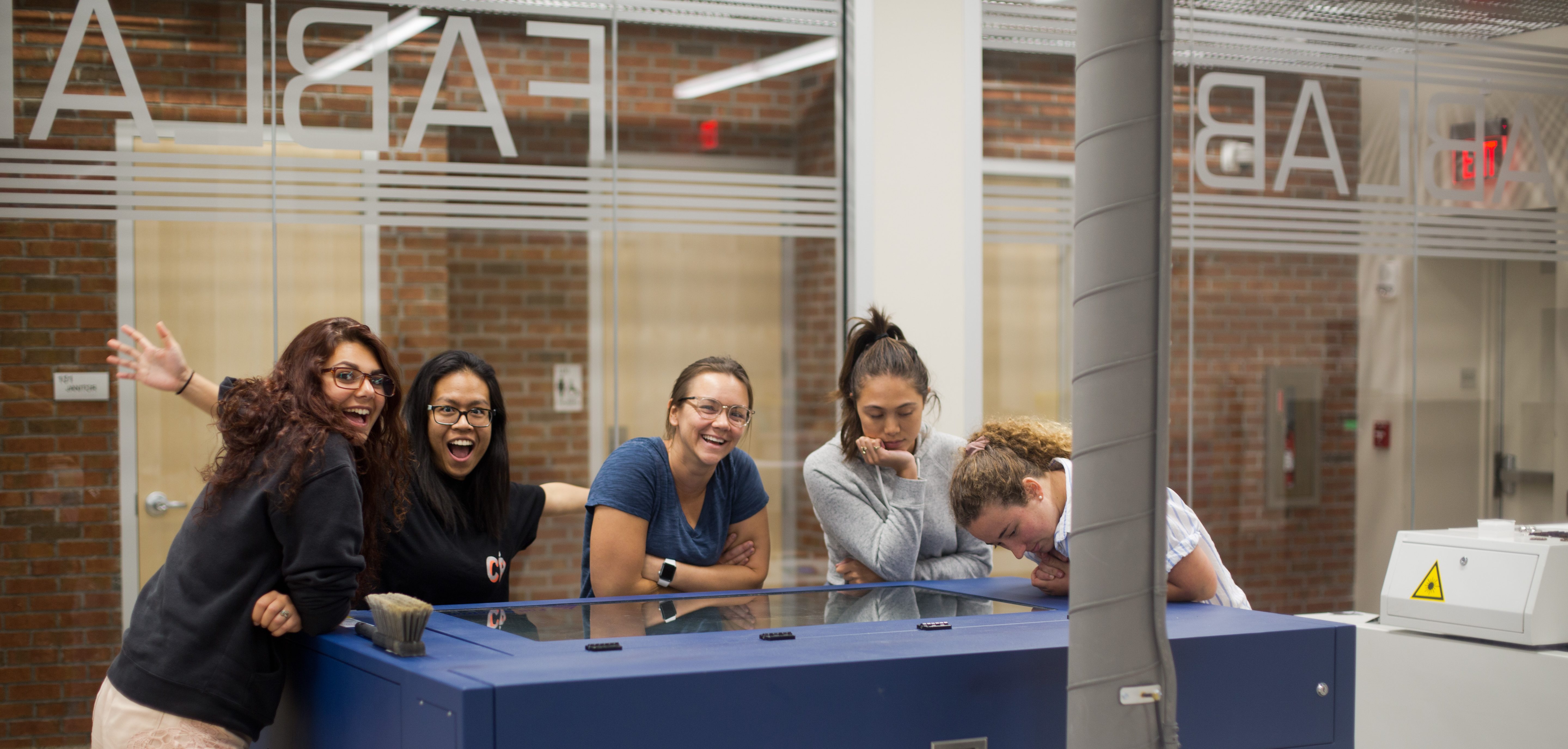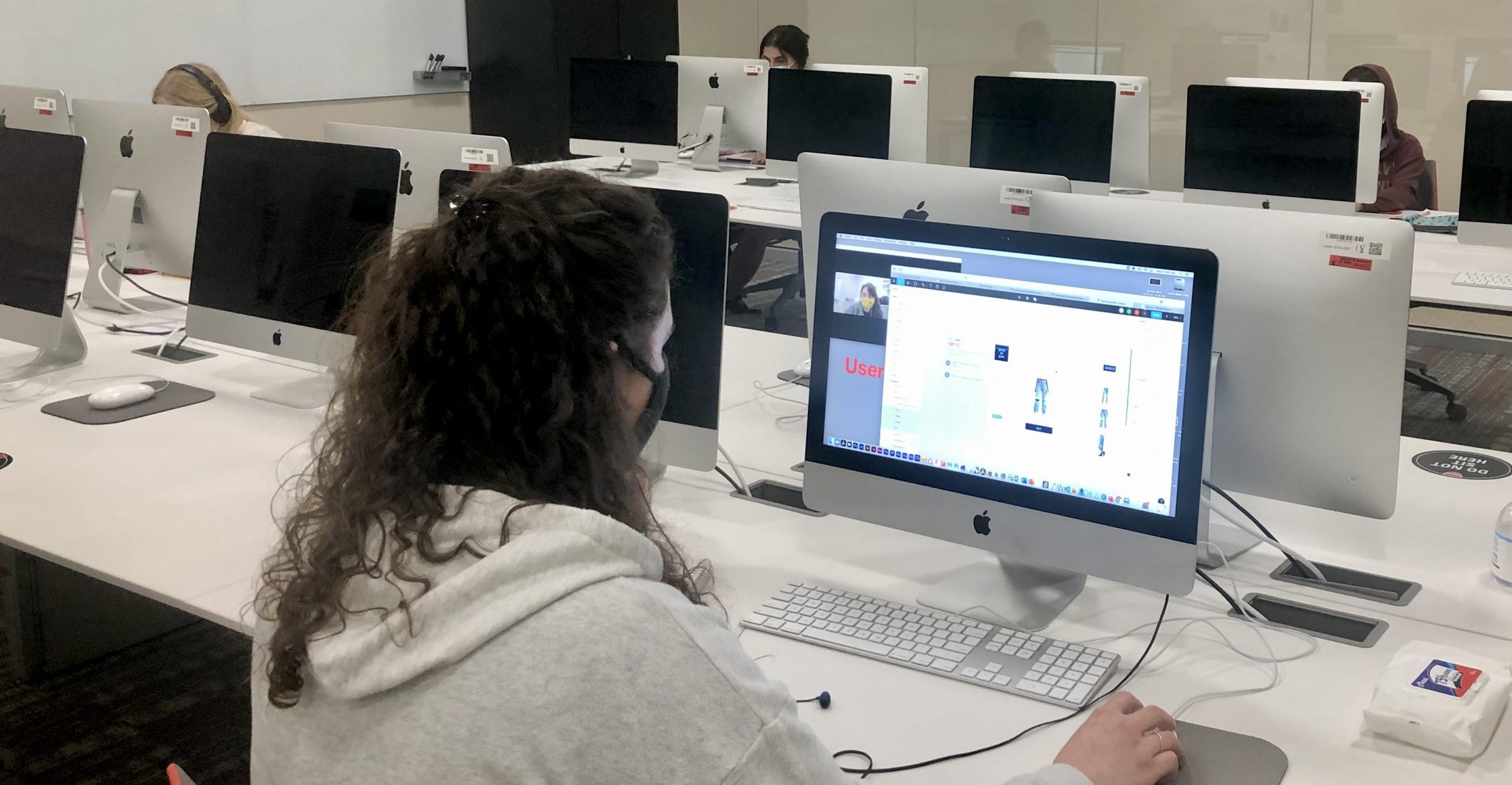I have taught Design Research, UX/UI Design Strategies, Typography 1, Typography 2, Foundations: Digital Art, Graphic Design 1, Graphic Design 2, Graphic Design Portfolio, Design Thinking, First-Year Seminar: Design Thinking, Special Projects, BFA Graphic Design Capstone, and Design Travel Courses. This page highlights my diverse teaching experiences. View a selection of my students’ work.
Check out a talk I gave at CAA 2024 about my Design Research students’ work, which involves the People’s Graphic Design Archive. I created a data visualization (below) in Miro to analyze 6 semesters and 240 artifacts they selected from Charlotte’s local graphic design history. I also shared details about this project on the AIGA Design Teaching Resources page. There was a nice write-up about the project from CoAA.
View the most recent collaborative book, CLT Graphic Design History: A Collective Research Effort Volume 6 (view PDF in a new tab with hyperlinks or preview without hyperlinks below) from spring 2024!
Design is Process


Pandemic Teaching Adjustments
Browser-based collaboration tools like Miro, Mural, and Figma—whether working remotely or in person—have made teamwork possible during the pandemic. I bring these tools into my classes for critiques and design thinking exercises almost daily now. I documented some of these instances below.
(above) This video shows the Miro board that my design thinking students worked in for an in-class group activity that I created for them to envision Tampa Bay area billboards 70 years from now based on possible shifts from various topics (education, sea level rise, transportation, healthcare, climate, etc.). I built the template for them to mind-map topics, predict Tampa Bay Times headlines 70 years from now, sketch out billboard concepts individually, and then come together as a group to combine/share ideas and rapidly prototype billboards that would be visible when the next century is just around the corner.
(above) This video shows my design thinking students working in groups on an in-class activity I created for them to research neighborhoods that would suit the needs of different people moving into the Tampa Bay area. They used prioritization grids in Miro to plot neighborhoods based on various user values extracted from personas and secondary research. After working with user personas, the next week they worked in pairs on interviewing techniques and practiced ux methodologies used to build personas that inform design decisions by using Mural’s “Empathy Mapping Canvas” and “5 Whys?” templates.
(above) This video shows some of my graphic design 2 students working in groups to redesign the City of Tampa flag as an in-class activity (inspired by Roman Mars) to review basic design principles.

(above) This image shows my students in a COVID-19 hybrid learning environment working in-person/remotely on a ux/ui workshop in Figma with guest designer Tiffany Tang from Waverly Lab, a ux/ui design agency in NYC. They explored atomic design principles and gained an understanding of an organized process leading up to a successful ui handoff from designer to developer.
Experiential Education/Travel Courses
I took an education abroad scouting trip to South Korea in 2019, and proceeded to create and successfully recruit students for a 2020 faculty-led design travel course to Seoul, South Korea (travel canceled due to COVID-19, taught online). In 2018, I attended the CIEE annual conference in Barcelona to learn about creating and leading study abroad programs.

I also assisted with an art/design travel course to NYC in Spring 2019, for which I organized and led tours at several design firms scattered around NYC and arranged for students to participate in a workshop with Ellen Lupton at the Cooper Hewitt Smithsonian Design Museum.

Event Planning
I have organized art and design events with guest speakers such as Gregory Siff and Bryony Gomez-Palacio. I also helped lead convocation and open house events, and designed promotional posters on occasion.



Other Experiences with Graphic Design in Higher Education
Guest Lecturing
I presented a design guest lecture to a group of international business and entrepreneurship students at the 2019 Sungkyunkwan University summer intersession in Seoul, South Korea. The lecture included a design thinking workshop with a topic of “identifying problems with the modern dating experience” that focused on conducting depth interviews to generate empathy and define problems.


Adjunct, Guest Lecturing & Mentoring
I served a semester as an Adjunct Assistant Professor of Typography online at the University of Florida. I presented a guest lecture on my work with PSCORE for North Korean human rights to a Design for Social Justice class at University at Buffalo. During graduate school, I guest lectured in Visual Methods, Typography 1, & Typography 2 at the University of Florida. I was also part of the group that selected modular furniture from Herman Miller to furnish UF’s Mint Design Studio space in Infinity Hall. During that time, I worked with fellow graduate students, Daniel Leonardos & Jiaming Li, to rebrand Mint & define the studio’s mission and learning outcomes for future students. I participated in the UF graphic design club VoxGraphis as a mentor & attended the club’s design studio tour trips to Atlanta, Chattanooga, Charlotte, & Tampa.


I led workshops on multiple occasions for students at UF. Here are some images and files from a workshop:
Typography 1, University of Florida: Guest Workshop
- workshop pictures + student work (.pdf)
- workshop plan (.pdf)
- exercise (Google Drive .zip: .indd, .idml, fonts, and images)
The goal of this workshop was to equip students with a foundational knowledge of typesetting within a grid-based layout and to provide an introduction to some functions of InDesign. The workshop consisted of benchmarking magazine brands, a software demonstration, a rapid prototyping design exercise, printing, and a mini-critique.
Teaching EFL
From August 2014–August 2015, I taught English as a Foreign Language at Changjin Elementary School in Sasang-gu, Busan, South Korea through the Korean government program EPIK (English Program in Korea). I was the only foreign teacher at the medium-sized public school. I taught grades 3–6 with Korean co-teachers for classes during normal school hours, and I taught my own after-school classes with small groups of 4–10 students. I was responsible for planning/directing summer and winter break English camps.

Design Thinking Egg Drop Challenge
This design thinking exercise involved group problem-solving by a process of sketching and rapid prototyping. Each group had a kit of materials that they could choose to use or disregard. There was only one egg for each group; so, although the students could speculate how their device would protect the egg based off their test flights, the final launch from the 5th floor was the true test. Afterwards, they examined design elements that caused devices to fail or succeed. View the exercise description from Jump Start.

Design Thinking Spaghetti Marshmallow Challenge
This exercise was similar to the Egg Drop Challenge in process; however, given that testing the noodle devices did not destroy the marshmallow like testing eggs could in the Egg Drop Challenge, groups were able to iterate their designs more effectively. View the exercise description from Stanford d.school.

Design Thinking Catapult Challenge
Similar to the design thinking processes used in the Egg Drop Challenge and the Spaghetti Marshmallow Challenge, the Catapult Challenge encouraged groups to iterate their designs by rapid prototyping.
This activity had multiple rounds of competition to encourage iterative design. Groups had a fixed amount of time to sketch and build their catapults and ammunition with the materials in their kits. Then, groups met in the hallway to test their devices and measure the travel distance of their launched ammunition. Students noted how they could improve their designs and came to the next round of the competition with their altered prototypes. This process repeated three times, and the final group scores were cumulative.

Learning Cursive + Group Typography Posters
Korea doesn’t have cursive writing in its public elementary school curriculum. I introduced cursive writing to my 5th and 6th grade students during winter English camp. After a few exercises learning the letterforms, groups of students worked together to create expressive typography posters using cursive letterforms and shapes.


Activities
I used some of my personal interests to engage students in active learning. From Simon Says Yoga to typical American field day activities and crafts, students learned English while taking a break from the rigor of the Korean education system.

Prescription vs. Co-creation
Young children love to role-play and use their imagination. This can be observed on the playground during recess or in the backseat of a car. How can this natural phenomenon of play be most effectively incorporated into the classroom for active learning?
The two videos below exhibit the students role-playing. In the first video, Let’s Go Out to Eat, students followed a prescribed script that I wrote. In the second video, students relied on the scripts they created on their own with my occasional assistance with grammar and vocabulary. In both cases, the students involved ranged from beginner to advanced in English-speaking skill level.
Findings: I found that the co-creative strategy of role-play development produced a more effective learning environment than the prescription method. In the co-creative exercise, higher-level students used more advanced English and challenged themselves and their classmates to learn how to use English to describe situations they dreamt up. Elements of humor and error arose from the co-creative method that created teaching opportunities. These findings support the child-centered Montessori Method of education.
Teaching EFL to kids in China online through VIPKid


